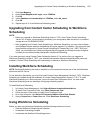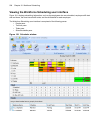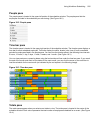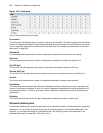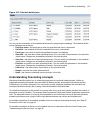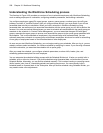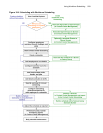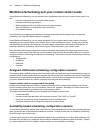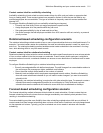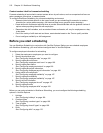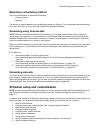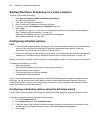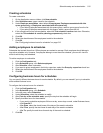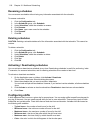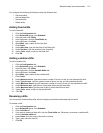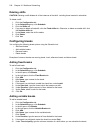Workforce Scheduling and your contact center needs 511
Contact centers ideal for availability scheduling
Availability scheduling is best suited to contact centers driven by shifts, such as hotels or companies that
focus on catalog sales. These contact centers have a specific number of shifts that can be filled by any
qualified employees who are available. This type of schedule is frequently used with contact centers that
operate 24/7.
To configure Workforce Scheduling for an availability scheduling environment
• Primarily use fixed shifts, but do not assign employees to specific shifts
• Assign employees all of the possible shifts they can work
• Set employee availability by day of week and time of day
• Use filters to assign the best employee available for a shift, based on skill set, seniority, or personal
priority number
Rotational-based scheduling configuration scenario
The rotational scheduling method consists of two or more unique schedules that recur at defined intervals. For
example, if a contact center rotates four schedules, the week one schedule repeats in week five, week nine,
and so on. The rotational scheduling method enables contact center schedules to be consistent in the long-
term, while allowing shifts to vary from week to week.
Contact centers ideal for rotational scheduling
Rotational scheduling is best suited to contact centers that require specific employees to cover unique periods
of time, such as medical clinics that are open on weekends. If each contact center employee is required to
work one weekend a month, a rotational schedule can ensure an even distribution of weekend work for each
employee.
To configure Workforce Scheduling for a rotational scheduling environment
• Primarily use assigned shifts with defined employees. The staff changes from one schedule rotation to
the next ensure fair coverage on nights, weekends, and holidays
• Recur the shifts multiple times based on the number of rotations
• Manually track and adjust which employees are assigned to each rotation; Workforce Scheduling
does not create a balanced schedule so you will need to make changes if you want to ensure the
schedule is fair
• Optionally use rotational scheduling in conjunction with other schedule types. For example, create a
schedule that uses the assigned shift method to cover Monday to Friday shifts and a second
schedule that uses the rotational shift method to cover shifts such as weekends or holidays
Forecast-based scheduling configuration scenario
The forecast scheduling method references historical data to create schedules. Contact centers that use
forecast scheduling have call volumes that can change considerably over relatively short periods of time,
resulting in inconsistent scheduling.
Forecast scheduling provides more flexibility than other scheduling methods since shifts are not defined. A
contact center that uses forecast scheduling does not have a fixed staff or fixed hours, as both change based
on the expected call volume. Typically, you plan a schedule one to two weeks in advance with forecast
scheduling.



